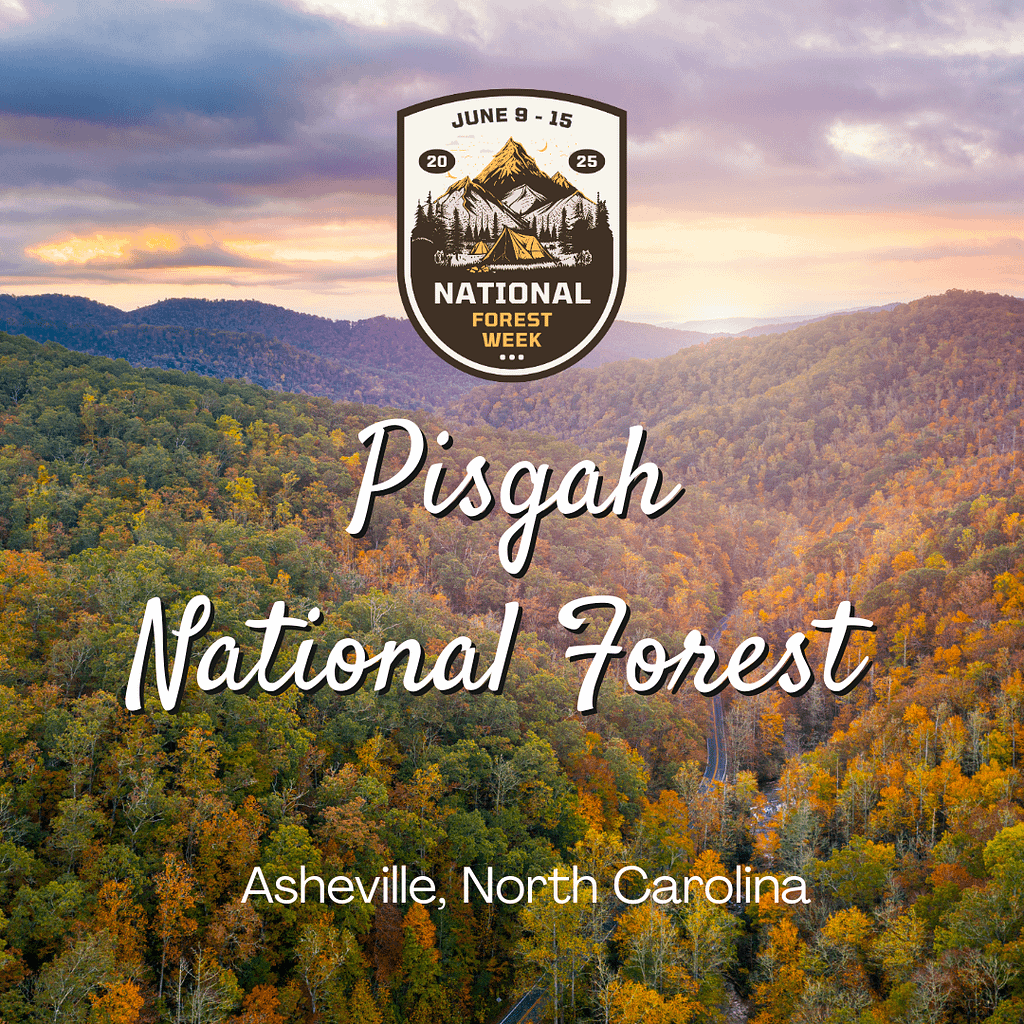
Pisgah National Forest spreads across the rugged Appalachian Mountains of western North Carolina. It invites visitors to explore sweeping hardwood landscapes, cascading waterfalls, and miles of scenic trails. This storied expanse, spanning over 500,000 acres, not only offers natural beauty but also plays a foundational role in the history of American forestry. From its origins under the Weeks Act to its present-day status as a hotspot for outdoor adventure, the forest exudes an inviting, dynamic spirit that inspires explorers, historians, and nature lovers alike.
Pisgah National Forest provides an immersive encounter with nature. Its diverse topography and rich ecosystems tell a story of resilience and reinvention that continues to resonate with those who visit. In every whispering breeze and every trickling stream, visitors can sense the legacy of generations dedicated to preserving these wild lands. The forest embodies a living museum of natural history, uniting breathtaking vistas with essential lessons of conservation and stewardship.
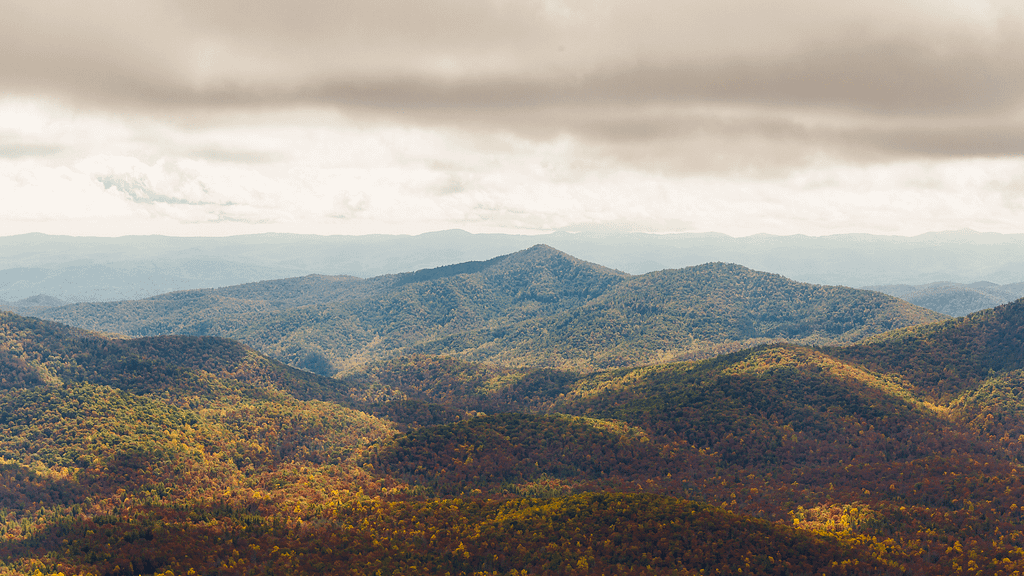
Origin and History of Pisgah National Forest
The history of Pisgah National Forest is as compelling as the landscapes that define it. In 1916, the forest officially became one of the first national forests in the eastern United States. Its origins are rooted in the progressive era of conservation, when visionary leaders recognized the importance of preserving vast tracts of wilderness for future generations. Inspired by the principles of sustainable management, Edith Vanderbilt sold approximately 86,700 acres from her famed Biltmore Estate to the federal government. This selfless act not only marked a turning point for conservation but also laid the groundwork for the forest’s expansion over time.
Early foresters and educators soon discovered that Pisgah was more than just a beautiful landscape—it was a living classroom. The forest became the site for the first forestry school in America, known as the Cradle of Forestry, where pioneers like Gifford Pinchot laid down the foundations of modern forest management. These early efforts sparked a national movement that balanced resource use with environmental preservation, ensuring that the forest could be enjoyed by countless visitors without degrading its natural wonders.
The very name “Pisgah” derives from a Biblical Hebrew word that denotes a mountain peak or summit—the perfect metaphor for this land, where lofty heights meet deep-rooted traditions. Throughout the decades, Pisgah National Forest has witnessed infrastructural developments, scientific research, and community initiatives that have fortified its status as a national treasure. Visitors today continue to engage with its living history, where every trail and clearing echoes the footsteps of conservation pioneers.
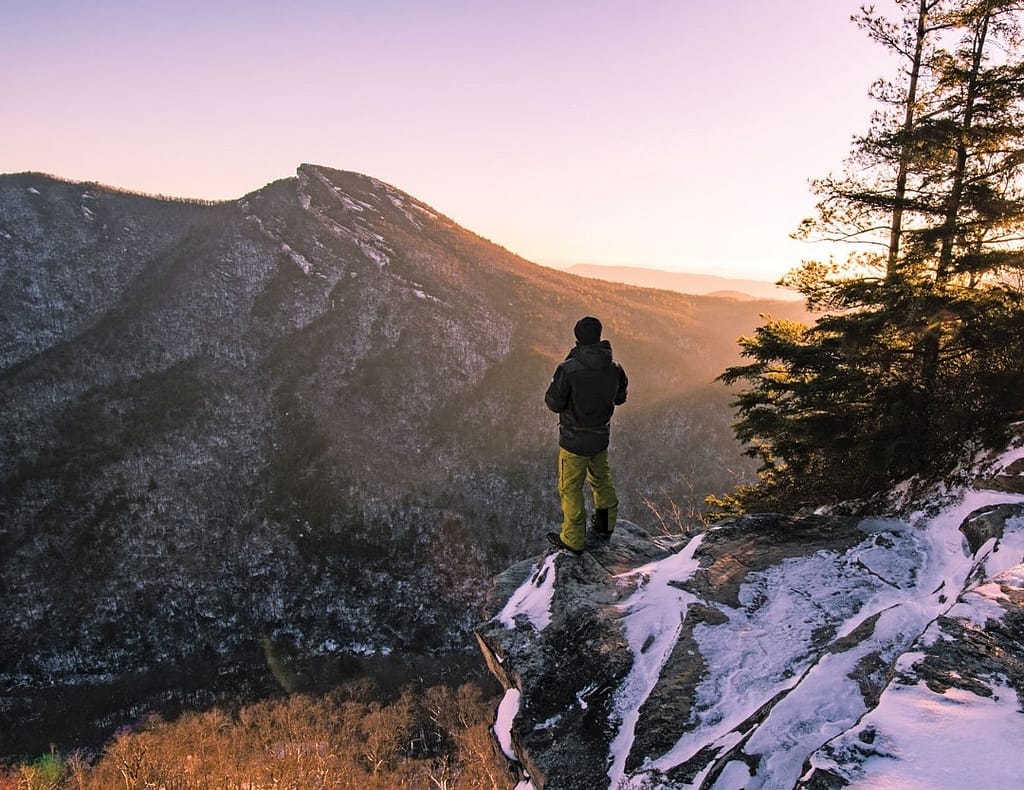
Types of Trees Within the Forest
Pisgah National Forest is home to a diverse array of tree species, each contributing to the forest’s ecological richness. The forest’s elevation range and varied climate create ideal conditions for numerous tree species to thrive. Some of the most common trees include:
Eastern Hemlock: Known for its towering height and graceful branches, the Eastern Hemlock is a keystone species in the forest. Sadly, it faces threats from the invasive hemlock woolly adelgid, prompting conservation efforts to protect this vital species.
Red Maple: Renowned for its striking red foliage in the fall, the red maple adds a splash of color to the forest. Its adaptability allows it to flourish in a range of soil types.
White Pine: Standing tall with its straight trunk and long, slender needles, the white pine is a majestic presence. It is one of the fastest-growing trees in the forest, often used in reforestation efforts.
Tulip Poplar: This tree is notable for its distinctive tulip-shaped flowers and vibrant yellow leaves in autumn. The tulip poplar is one of the tallest hardwoods in the eastern United States.
American Beech: The smooth, gray bark and dense canopy of the American beech provide vital habitats for numerous forest creatures. Its nuts are an important food source for wildlife.
These tree species not only define the forest’s landscape but also support its diverse ecosystems, providing shelter and sustenance for countless species.

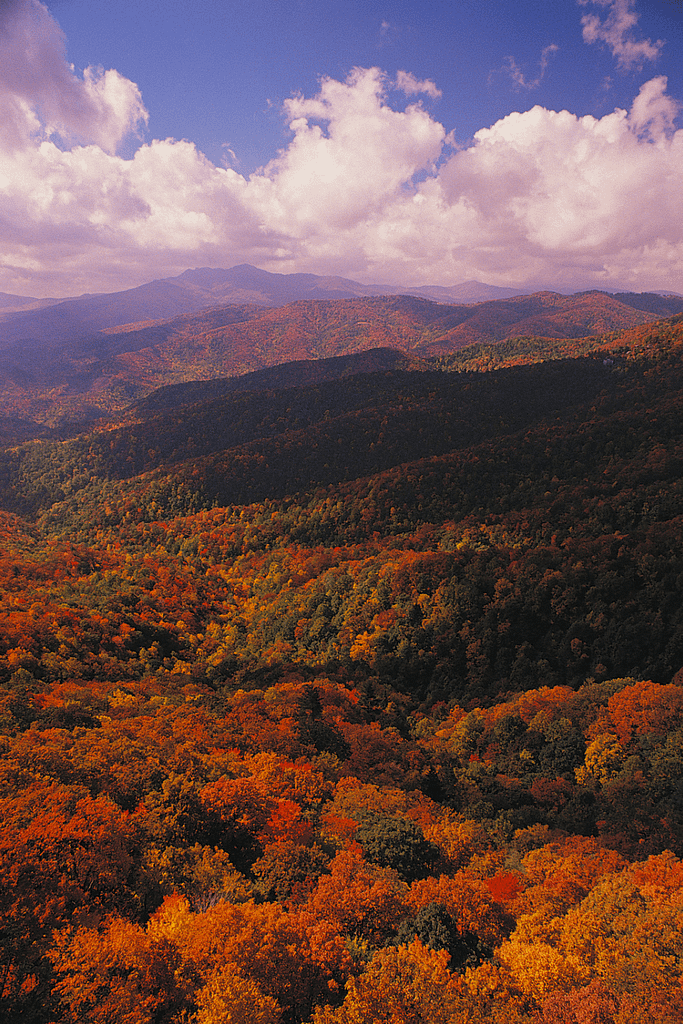
Wildlife Habitats in Pisgah National Forest
The rich array of wildlife habitats in Pisgah National Forest is a testament to the forest’s ecological diversity. This resilient mosaic of environments, ranging from dense hardwood groves to high-elevation conifer stands, sustains an astonishing variety of animals. Each habitat plays a vital role in maintaining the ecological balance, ensuring that wildlife thrives amid the forest’s rugged beauty.
Numerous species call this forest home. Elegant white-tailed deer are often seen gracefully navigating the forest edges, especially during the cooler hours of dawn and dusk. Eastern wild turkeys forage in open clearings, their distinctive gobbles echoing through the woodlands. These birds, along with agile eastern gray squirrels, add a vibrant dynamic to the forest’s live canvas.
Predatory birds such as the red-tailed hawk soar high above the canopy, vigilantly surveying the ground for signs of movement. Their impressive wingspan and keen eyesight are a constant reminder of the forest’s wildlife prowess. Smaller creatures, particularly the often-overlooked salamanders, find refuge under moist leaf litter and rocky crevices. With over 30 species recorded in the region, these amphibians contribute significantly to the biodiversity cherished by conservationists and naturalists alike.
In Pisgah, nature interweaves each habitat with the others, creating a network of interdependence that showcases the forest’s complexity. When visitors trek along a stream or pause beside a quiet glade, they experience fleeting, intimate encounters with wild inhabitants. The forest’s rich biodiversity continues to reinforce its reputation as a realm where nature’s wonders persist against the backdrop of human progress.
Wilderness Areas Within the Forest
Pisgah National Forest contains designated wilderness areas that elevate the visitor experience by offering unspoiled natural landscapes. These wilderness areas preserve the forest in its most untouched form and provide a sanctuary for both flora and fauna. Below is a curated list of some of the most remarkable wilderness areas found within Pisgah:
Shining Rock Wilderness: Shining Rock Wilderness is one of the original wilderness areas established in the forest. Covering over 18,000 acres, it offers rugged terrain and expansive ridges that deliver breathtaking vistas. Hikers and nature enthusiasts often venture here to experience solitude and the majestic allure of high mountain ridges. The wilderness is managed to preserve its pristine condition while accommodating responsible outdoor recreation.

Linville Gorge Wilderness: Linville Gorge Wilderness stands out as one of the most dramatic and challenging wild places in the eastern United States. Known as the “Grand Canyon of the East,” it presents steep, rugged cliffs and deep gorges carved by the Linville River. Those who venture onto its trails experience awe-inspiring views and form an intimate connection with one of nature’s raw masterpieces. This wilderness is a haven for those seeking an exhilarating and immersive experience.
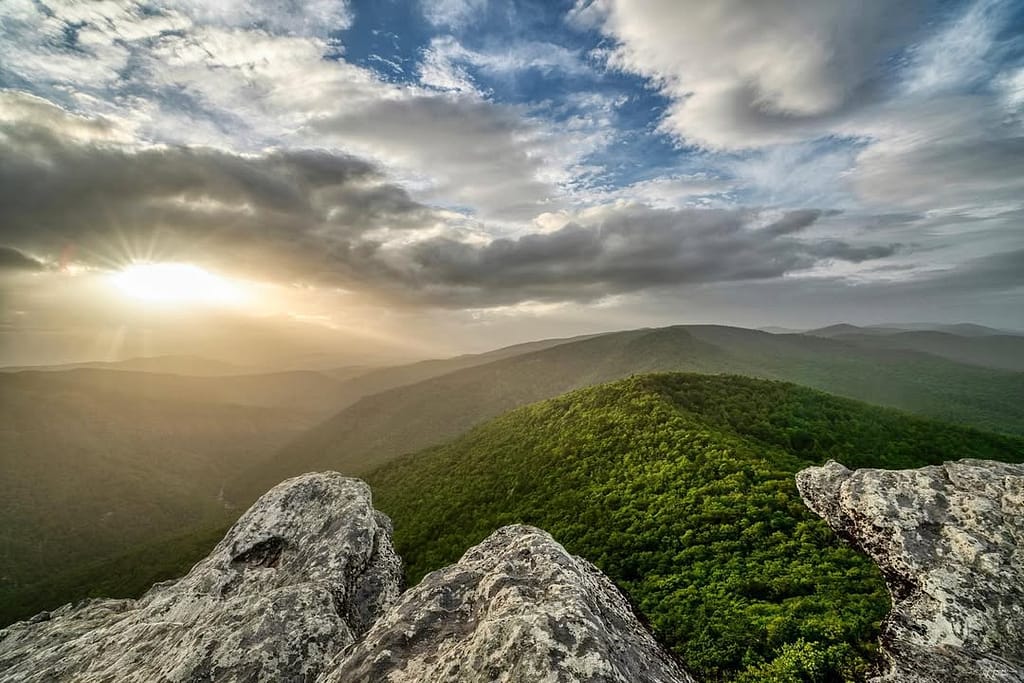
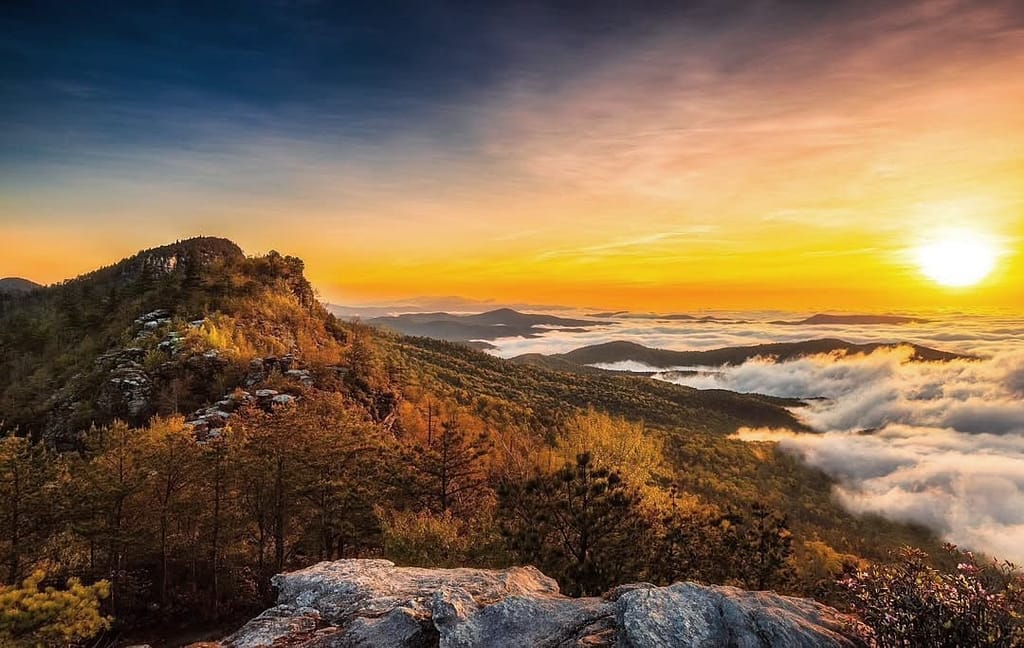
Middle Prong Wilderness: Located in a high-elevation region, Middle Prong Wilderness comprises roughly 7,900 acres of steep ridges and undulating terrains. Its remote trails wind through lush forests and over rugged outcrops, offering hikers a challenging yet rewarding journey. The area supports diverse ecosystems and serves as a critical refuge for many native species. Visitors often remark on the peaceful isolation and pristine beauty this wilderness area provides.
Outdoor Recreation Opportunities
Pisgah National Forest is a playground for outdoor enthusiasts, offering a wide range of activities for adventurers of all ages and skill levels. Whether you’re an avid hiker, a mountain biker, or a casual nature lover, the forest has something to offer.Hiking: With over 500 miles of trails, Pisgah National Forest provides endless opportunities for exploration. From easy walks to strenuous hikes, the forest’s trails cater to all abilities.
Camping: The forest offers numerous campsites, ranging from developed campgrounds with amenities to remote backcountry sites. Camping in Pisgah allows visitors to immerse themselves in nature and enjoy the serene beauty of the wilderness.
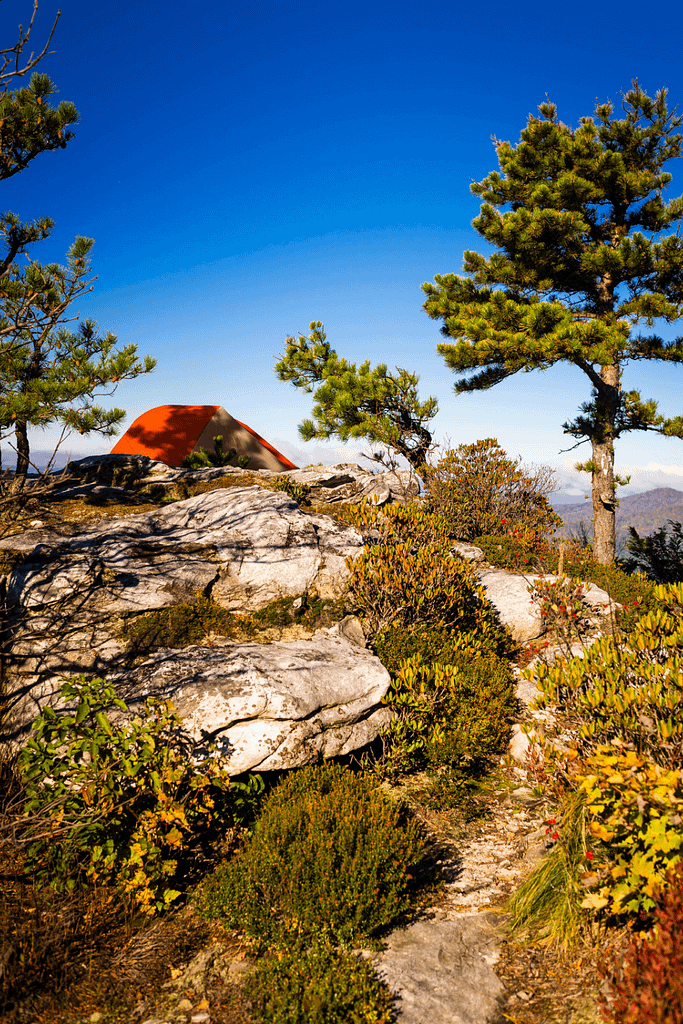
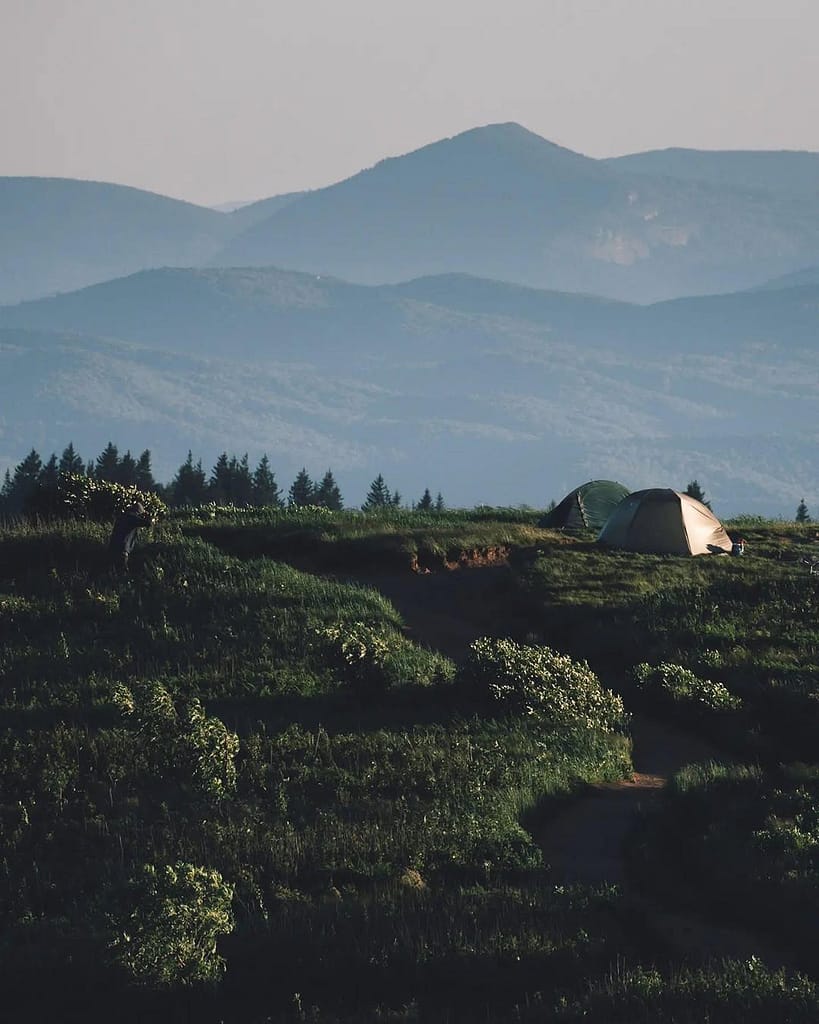
Fishing: Anglers can enjoy casting their lines in the forest’s many rivers and streams, which are teeming with fish such as trout and bass. The forest’s waters provide a serene setting for a day of fishing.
Mountain Biking: Pisgah National Forest is a premier destination for mountain biking, with trails that range from beginner-friendly to challenging singletracks. The forest’s varied terrain offers thrilling rides and breathtaking views.
Rock Climbing: With its towering cliffs and crags, the forest is a haven for rock climbers. Areas such as Looking Glass Rock provide challenging routes for climbers of all levels.
Water Activities: The forest’s rivers and lakes offer opportunities for kayaking, canoeing, and swimming. The cool mountain waters are perfect for a refreshing dip on a hot summer day.
The diverse recreational opportunities in Pisgah National Forest make it a beloved destination for outdoor enthusiasts seeking adventure and relaxation in a stunning natural setting.


Impact on Surrounding Communities
Pisgah National Forest is more than just a natural wonder; it is an integral part of the surrounding communities. The forest supports local economies through tourism, providing jobs and revenue for businesses that cater to visitors. Moreover, it serves as a vital green space that enhances the quality of life for residents, offering opportunities for recreation, education, and inspiration. The forest’s rich biodiversity and natural beauty continue to attract visitors from near and far, fostering a deep appreciation for the environment and the importance of conservation.
Relevant Links
Official Website of Pisgah National Forest: Explore detailed information about the forest, including maps, visitor guidelines, and current conditions.
National Forest Foundation: Learn about efforts to preserve and protect national forests, including Pisgah, and discover ways to get involved.
Pisgah National Forest – Wikipedia: Access an in-depth overview of the forest’s history, ecology, and significance in American forestry.
Explore Asheville: Pisgah National Forest: Find travel tips, scenic guides, and local attractions near Pisgah National Forest for your next adventure.
Photographer Credits
We deeply appreciate the gifted photographers who have beautifully captured the essence of Pisgah National Forest. Through your artistry, the forest’s misty ridges, cascading waterfalls, and hidden trails come to life, inviting us to immerse ourselves in its wonders. Your work not only showcases the breathtaking scenery but also inspires adventure, reflection, and appreciation for nature’s beauty. Follow their journeys through the links provided and continue to be inspired by their incredible perspective!
- Man on snowy peak – Our State Magazine North Carolina
- Linville Gorge Wilderness (left photo) Brad Harper Photography
- Linville Gorge Wilderness (right photo) Justin Potter
- Camping photo (right photo) David Johnson


We love Pisgah 💘 Great place to hike!